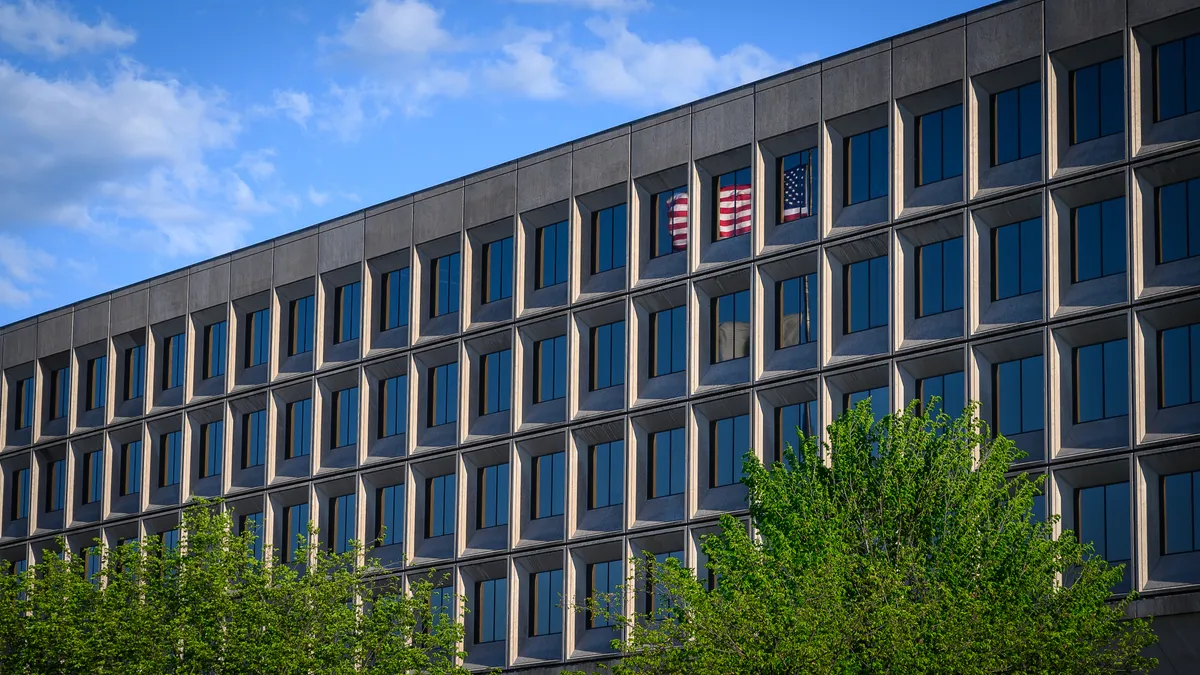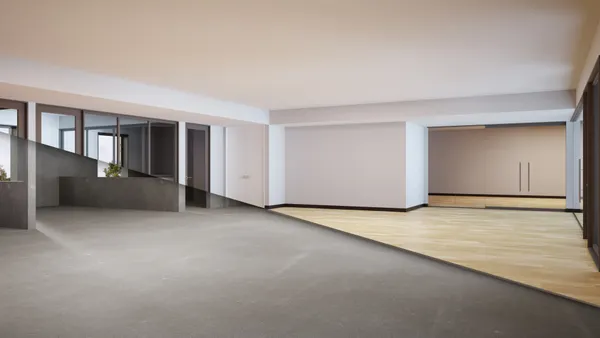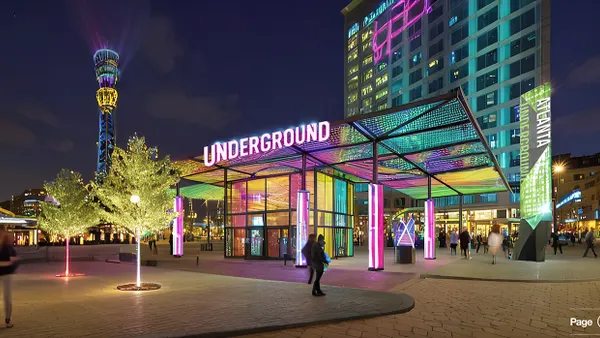Dive Brief:
- Improving passive energy efficiency performance in buildings prevents deaths and keeps occupants safer during extreme weather events, a recent U.S. Department of Energy report found.
- The report studied correlations between power outages and extreme temperature events, measurement of passive survivability, occupant and property damage, and a cost-benefit analysis of achieving, meeting and exceeding energy code provisions.
- Sample results showed that implementing passive building measures to meet or exceed current codes can improve habitability by as much as 120% during extreme cold and up to 140% during extreme heat.
Dive Insight:
The report addressed whether energy-efficient buildings could keep occupants safer during power outages. This idea has been a key element of a pilot credit on passive sustainability in the U.S. Green Building Council’s Leadership in Energy and Environmental Design rating system, or LEED.
The built environment will likely face extreme weather events “of greater magnitude and extent over the next half-century,” DOE said in the report, emphasizing that these events often cause power outages that extend beyond the initial disaster. The DOE also noted that building conditions can affect the level of exposure occupants and property encounter during extreme heat events, which can result in costly damages to worker productivity, health and property.
The study determined that building resilience benefits often extend beyond the building itself. For instance, building-grid integration and connected HVAC systems can lessen peak demands on utility grids and increase the stability of overarching energy grid systems.
The report, which addresses both new construction and existing buildings, found that strengthening the resilience of buildings equips communities, states and the nation to effectively tackle complex risks and uncertainties stemming from disruptive weather events.
In an interview with Facilities Dive, Craig Carroll, the Environmental Protection Agency’s response and removal branch chief manager for Region 6, noted the importance of ensuring that facilities comply with local and federal regulations. He pointed to planning and compliance as two key differentiators in gauging and responding to the severity of emergency outcomes. “If you're spending your time routinely complying with [regulations], that's going to allow you to take care of the majority of your issues before they become real issues,” he said.
The DOE underscored the effectiveness of implementing energy-efficiency technologies and design strategies in strengthening the resilience of buildings and the overarching energy system before, during and after major disruptive events.
Energy codes have a direct impact on energy-resilience outcomes. That impact includes increased thermal resistance and an ability for buildings to maintain comfortable indoor environments. The researchers said that because these building codes typically meet established criteria such as technological feasibility and cost effectiveness, they are “uniquely positioned to promote resilience” as a policy instrument.
The research methodology includes two valuation metrics — a passive survivability metrics’ Standard Effective Temperature degree hours and the heat index, which are part of the EnergyPlus building simulation program’s output reports. These metrics can be “readily applied to indicate the resilience benefit of increased efficiency,” the DOE said.
The report, commissioned by the DOE’s Building Technology Office, focuses on six U.S. cities and includes research from experts at the Pacific Northwest National Laboratory, National Renewable Energy Laboratory and the Lawrence Berkeley National Laboratory. The effort, launched as a result of climate-driven disasters, builds on previous efforts by the DOE’s Building Technologies Office to identify building resilience metrics.













